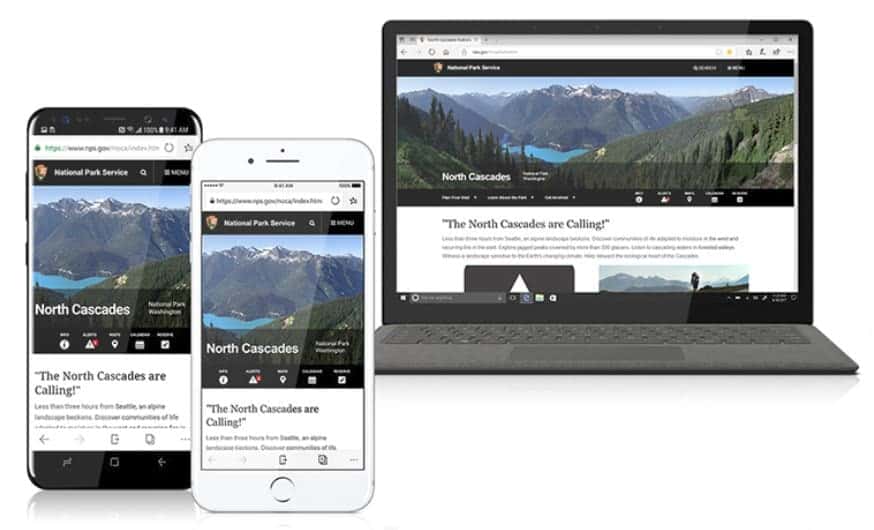- Aug 6, 2014
- 1,044
Microsoft announced plans today to release a version of the company's Microsoft Edge web browser for Apple's iOS and Google's Android operating system.
The release for Apple's iOS operating system seems to be available already, the Android release is still under development. Both releases are currently only available to Windows Insiders who run a copy of the Windows 10 Fall Creators Update on their machine.
All users may open the promotional page for Microsoft Edge for iOS and Android however.

This is not the first time that Microsoft brought a web browser to a non-Windows operating system. The company released Internet Explorer for Mac many years ago, but stopped doing so after a while.
Microsoft Edge has been available for Windows 10 only up until now as well, and the release for Android and iOS means that versions of Microsoft Edge will land on non Microsoft operating systems and not on previous versions of Windows that Microsoft still supports.
It is interesting to note that Microsoft did not port Edge to the two mobile platforms. The iOS version is a re-skin of Apple's Safari web browser for iOS more or less. This is the only option to bring browsers to iOS as Apple has a set of restrictions in place that prevent different browsers from being ported to the operating system. This restriction affects other browser developers, Mozilla and Google, as well for instance.
Android does not have these restrictions, but Microsoft made the decision to use Google's Blink browsing engine for the port.
In short: both browsers use a different engine than Microsoft Edge on Windows 10. This begs the question: how much Edge is in the browser?
The promo page provides some details on what Edge for iOS and Android supports:
The release for Apple's iOS operating system seems to be available already, the Android release is still under development. Both releases are currently only available to Windows Insiders who run a copy of the Windows 10 Fall Creators Update on their machine.
All users may open the promotional page for Microsoft Edge for iOS and Android however.

This is not the first time that Microsoft brought a web browser to a non-Windows operating system. The company released Internet Explorer for Mac many years ago, but stopped doing so after a while.
Microsoft Edge has been available for Windows 10 only up until now as well, and the release for Android and iOS means that versions of Microsoft Edge will land on non Microsoft operating systems and not on previous versions of Windows that Microsoft still supports.
It is interesting to note that Microsoft did not port Edge to the two mobile platforms. The iOS version is a re-skin of Apple's Safari web browser for iOS more or less. This is the only option to bring browsers to iOS as Apple has a set of restrictions in place that prevent different browsers from being ported to the operating system. This restriction affects other browser developers, Mozilla and Google, as well for instance.
Android does not have these restrictions, but Microsoft made the decision to use Google's Blink browsing engine for the port.
In short: both browsers use a different engine than Microsoft Edge on Windows 10. This begs the question: how much Edge is in the browser?
The promo page provides some details on what Edge for iOS and Android supports:
- Synchronization between Windows 10 PCs and mobile devices, including passwords, favorites, and tabs.
- Reading View as a readability option to focus on articles and do away with menus, ads and other undesirable elements when reading.
- Hub View to manage favorites, the reading list, history, and books.
- Built-in QR Code Reader.
- Voice Search support.
- InPrivate browsing mode.
